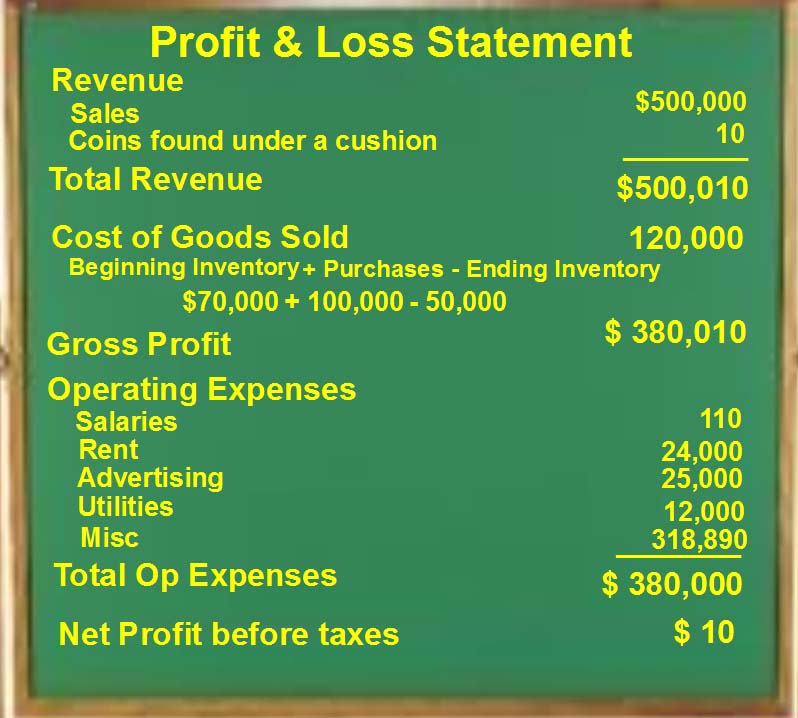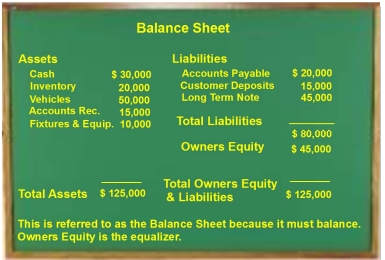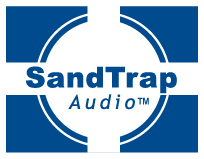Ed's
AV Handbook
Batting practice for the AV Professional
and primer for the novice
Chapter
10 Page 3
AV Business & Marketing
Implement, assess,
and adjust
Hit
the street with your business & marketing
plan. Produce your product/service. Launch
promotional tactics.
And keep the following cycle in motion.
The cycle
Promotion generates > Leads generate > Presentations generate > A Close generates > Sales > Repeat
And keep the following cycle in motion.
The cycle
Promotion generates > Leads generate > Presentations generate > A Close generates > Sales > Repeat
Then ask, Is the plan working?
The answer lies in a 'macro' and 'micro' audit of your business data.
The macro audit
Assessment begins with the macro numbers of the Profit & Loss Statement and the Balance Sheet.
The P&L assesses profitability.
The Balance Sheet measures financial capacity and health.
The profit & loss statement
The Profit & Loss Statement is the undisputed bottom line. The P&L computes the total revenue collected less the total incurred costs.
This computation answers the question - are you making money?

Budget vs actual
Initiate each month, quarter, and year with an annual set of projected profit & loss statements. Use the projected operating expenses as your operating budget. Scrutinize actual results that deviate from the budget. But keep in mind that lower than budgeted expenses are not necessarily a good situation. For example, lower than budgeted promotional expense may be due to a failure to execute an advertising campaign. Lower than budgeted payroll may lead to a loss of personnel.
Inventory management
Use the P&L to manage inventory. Adequate levels of inventory (the principal consumer of cash) must be maintained to fuel sales.
Manage inventory purchases with an "Open to Buy" budget. The "Open to Buy" is equal to the projected cost of goods sold less the actual inventory on hand. Allocate this budget on a monthly or quarterly basis.
Assess the use of inventory cash with the financial yardstick of inventory turnover. Inventory turnover equals the number of times you annually sell and replace inventory. Calculate inventory turnover by dividing the annual cost of goods sold by the average monthly inventory level. Your turnover goal should be within the industry average for consumer electronics retailers of 4 to 9 turns per year.
The balance sheet
The Balance Sheet is an account of what a business owns and owes - assets vs liabilities.
It also accounts for the value of ownership's stake or equity in the business.

Fixed vs liquid assets
An asset can be fixed or liquid. Cash is liquid. A light fixture is not.
The faster an item converts to cash, the more liquid it is.
Hot selling items are liquid. Dead inventory is not.
Long term vs current liabilities
A liability can be current or long term.
A current liability is a note or invoice that is due soon, as in 30, 60, or 90 days.
A long-term liability is due in years not months.
Business oil pressure
Somewhat analogous to an oil pressure gauge -- use the balance sheet to assess your cash flow health via the Current Ratio or the Acid Test. Industry standards for specialty retail stores are 2.2 for a Current Ratio and more than 1 for the Acid Test.
- The Current Ratio
The ratio of Liquid assets (cash + inventory + accounts receivable) to Current Liabilities.
- The Quick Ratio or Acid Test
The ratio of the Assets (cash + account receivables + short-term investments) to Current Liabilities.
The business power supply
Think of these ratios as the power supply specs of the business.
A power supply
that establishes the Asset-voltage-pressure
and the Cash-flow-amperage
to drive the system.
Each test assesses the capability of a business to meets its financial obligations.
Owners equity
Finally, compute the value of the owners' stake -- owners equity -- by taking the difference between the assets and the liabilities.
It’s the balance of the balance sheet. The industry standard of owner equity health for a specialty retailer is 0.485 times the total assets.
Each test assesses the capability of a business to meets its financial obligations.
Owners equity
Finally, compute the value of the owners' stake -- owners equity -- by taking the difference between the assets and the liabilities.
It’s the balance of the balance sheet. The industry standard of owner equity health for a specialty retailer is 0.485 times the total assets.
Ed's AV Handbook
Copyright 2007 Txu1-598-288 Revised 2024
Sponsored By

Architectural Speaker Tuning System
for
in-wall/ceiling custom installed speakers.
Reclaim
The Performance You Paid For
Site Menu
Home
Table of
Contents
Handbook Chapters
1 AV
Terms
2 AV Physics
3 Sound Reproduction
4 Video Reproduction
5 The AV System Sequence
6 The Room, Speaker, & TV
7 Acoustical Strategy - Small Room
8 Home Theater by Design
9 AV Sales Training
10 AV Business & Marketing
Contact
About